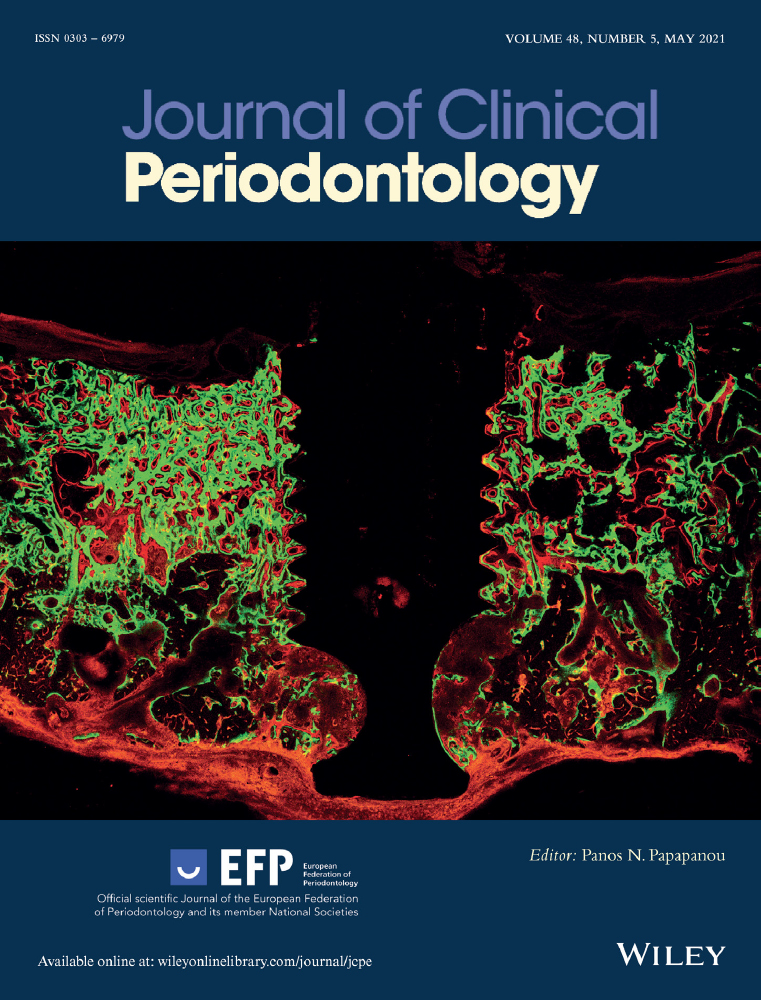Clinical and histological comparison of the soft tissue morphology between zirconia and titanium dental implants under healthy and experimental mucositis conditions—A randomized controlled clinical trial
Funding information
The study is funded by a grant of the International Team for Implantology (1018-2014). Material support was granted by Straumann Holding AG
Abstract
Objectives
To analyse the soft tissue morphology under healthy and experimental mucositis conditions comparing zirconia and titanium implants.
Methods
Forty-two patients with two adjacent missing teeth received one zirconia (Zr) and one titanium (Ti) implant, with the mesial and distal position randomized. At 3 months, half of the patients were instructed to continue (healthy; h) and the other half to omit (experimental mucositis; m) oral hygiene around the implants for 3 weeks. Clinical parameters were evaluated before and after the experimental phase, and a soft tissue biopsy was harvested. Mixed model analyses were performed to analyse the data.
Results
The plaque control record increased significantly for the two mucositis groups, reaching 68.3 ± 31.9% (mean ± SD) for Zr-m and 75.0 ± 29.4% for Ti-m (p < .0001), being also significantly lower for Zr-m than for Ti-m. Bleeding on probing remained stable in group Zr-m and amounted to 21.7 ± 23.6%, but increased significantly in group Ti-m (p = .040), measuring 32.5 ± 27.8%. The number of inflammatory cells and the length of the junctional epithelium did not significantly differ between the groups.
Conclusion
Both implants rendered similar outcomes under healthy conditions. Lower plaque and bleeding scores were detected for zirconia implants under experimental mucositis conditions. Histologically, only minimal differences were observed.
CONFLICT OF INTEREST
Dres Thoma, Hämmerle and Jung report further grants from the ITI outside of the submitted work. Dres Thoma, Hämmerle, Jung and Bienz report further grants and lecture support from Straumann Holding AG outside of the submitted work.
Open Research
DATA AVAILABILITY STATEMENT
The data that support the findings of this study are available from the corresponding author upon reasonable request.




